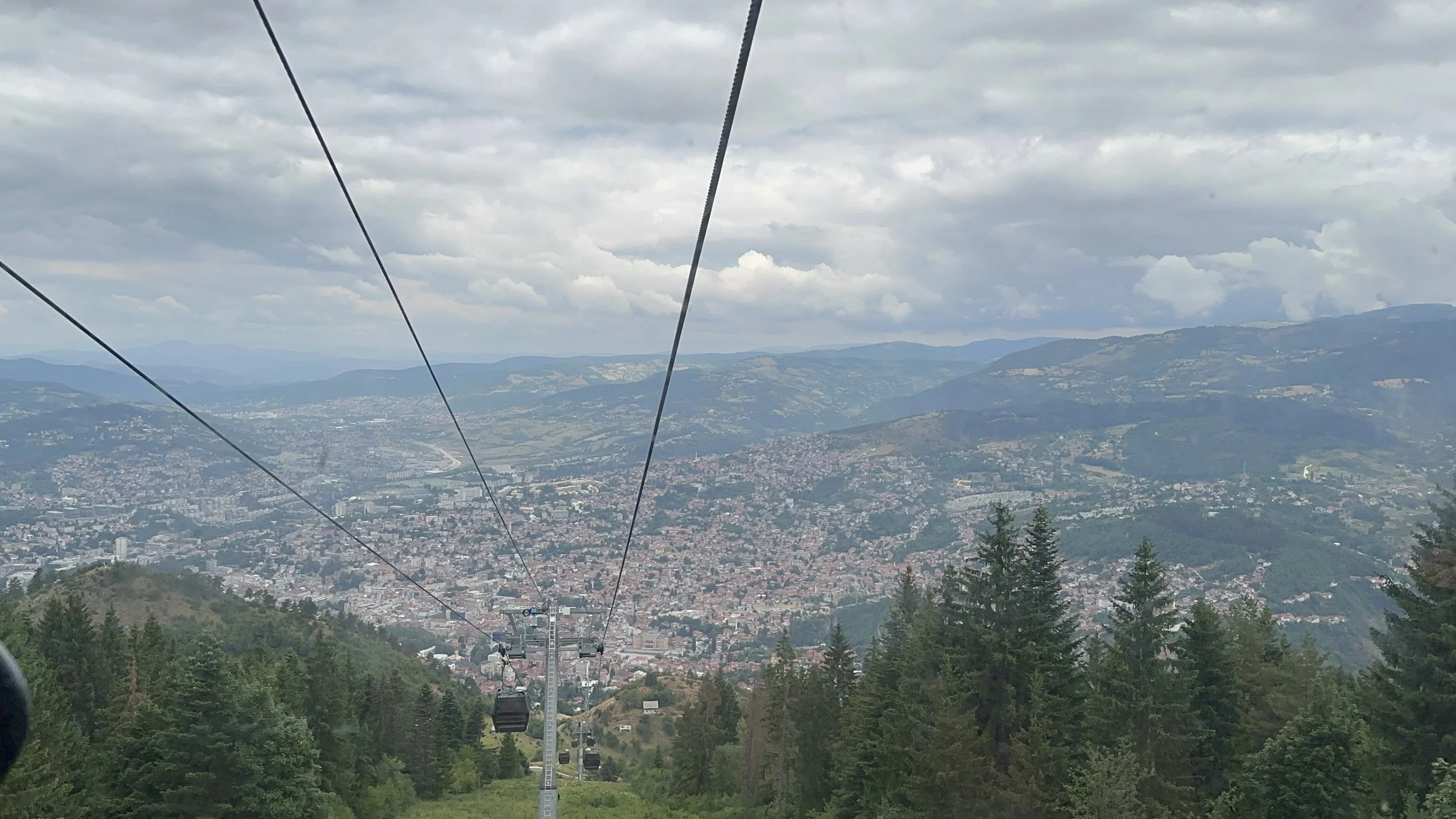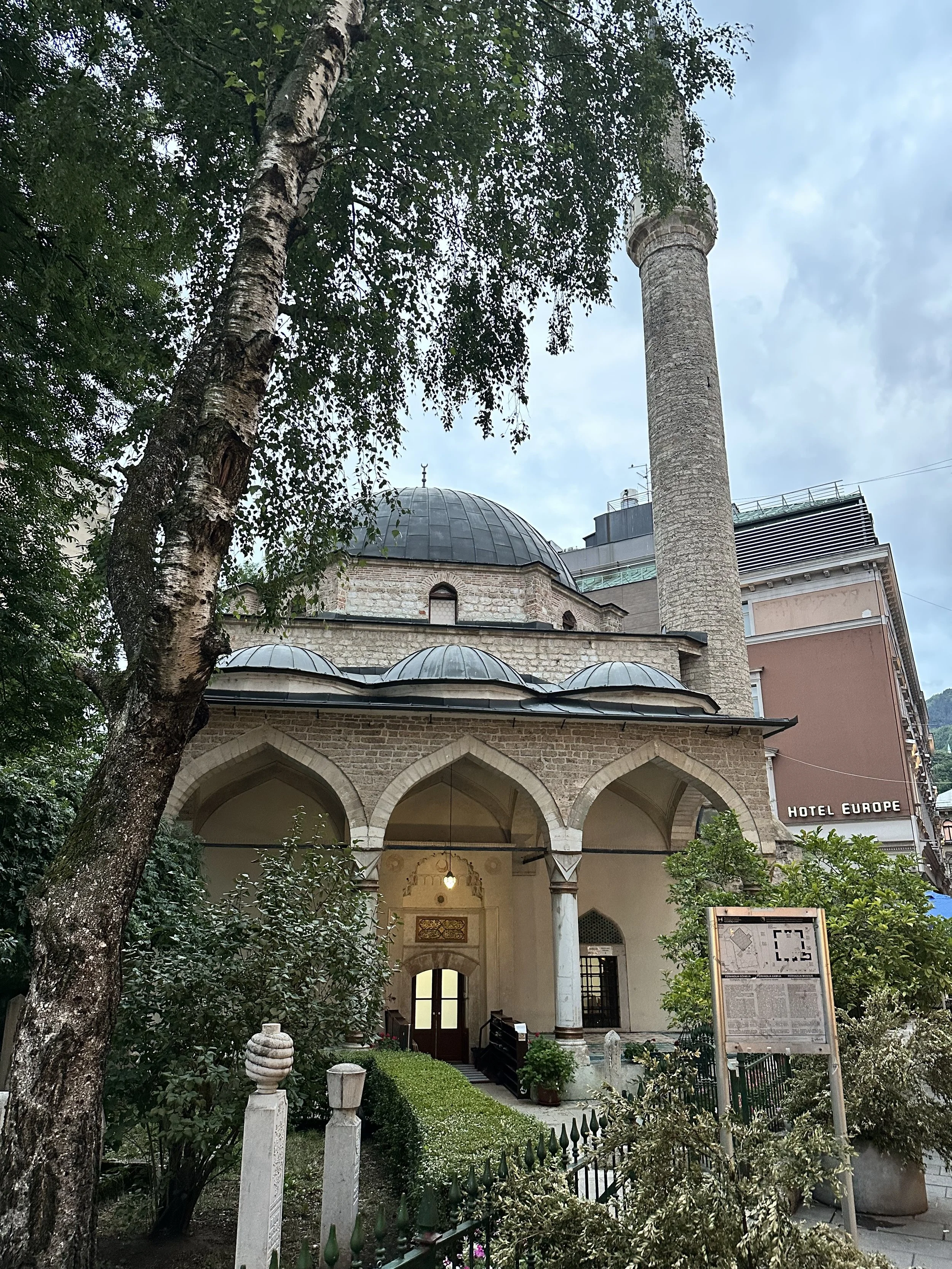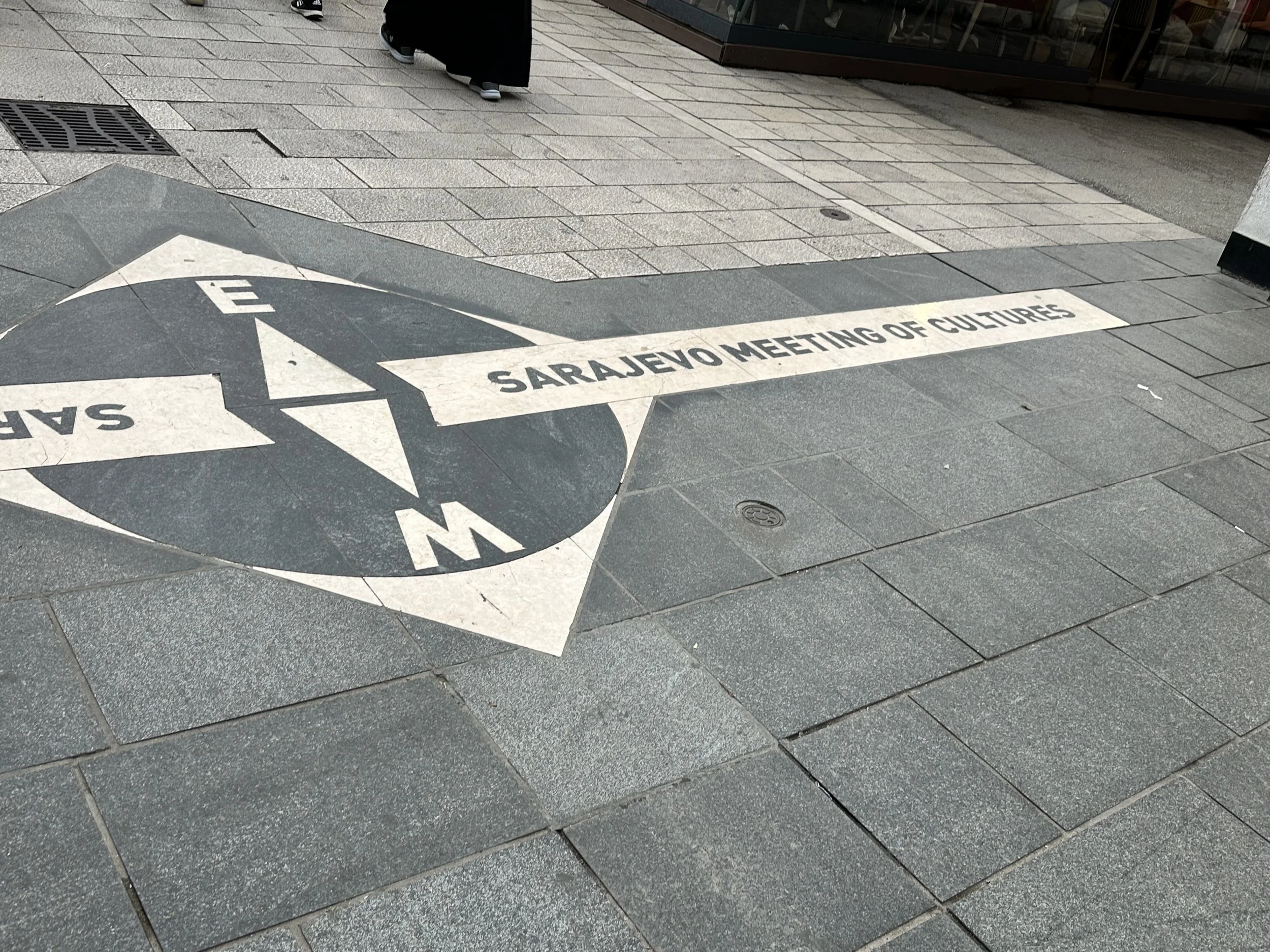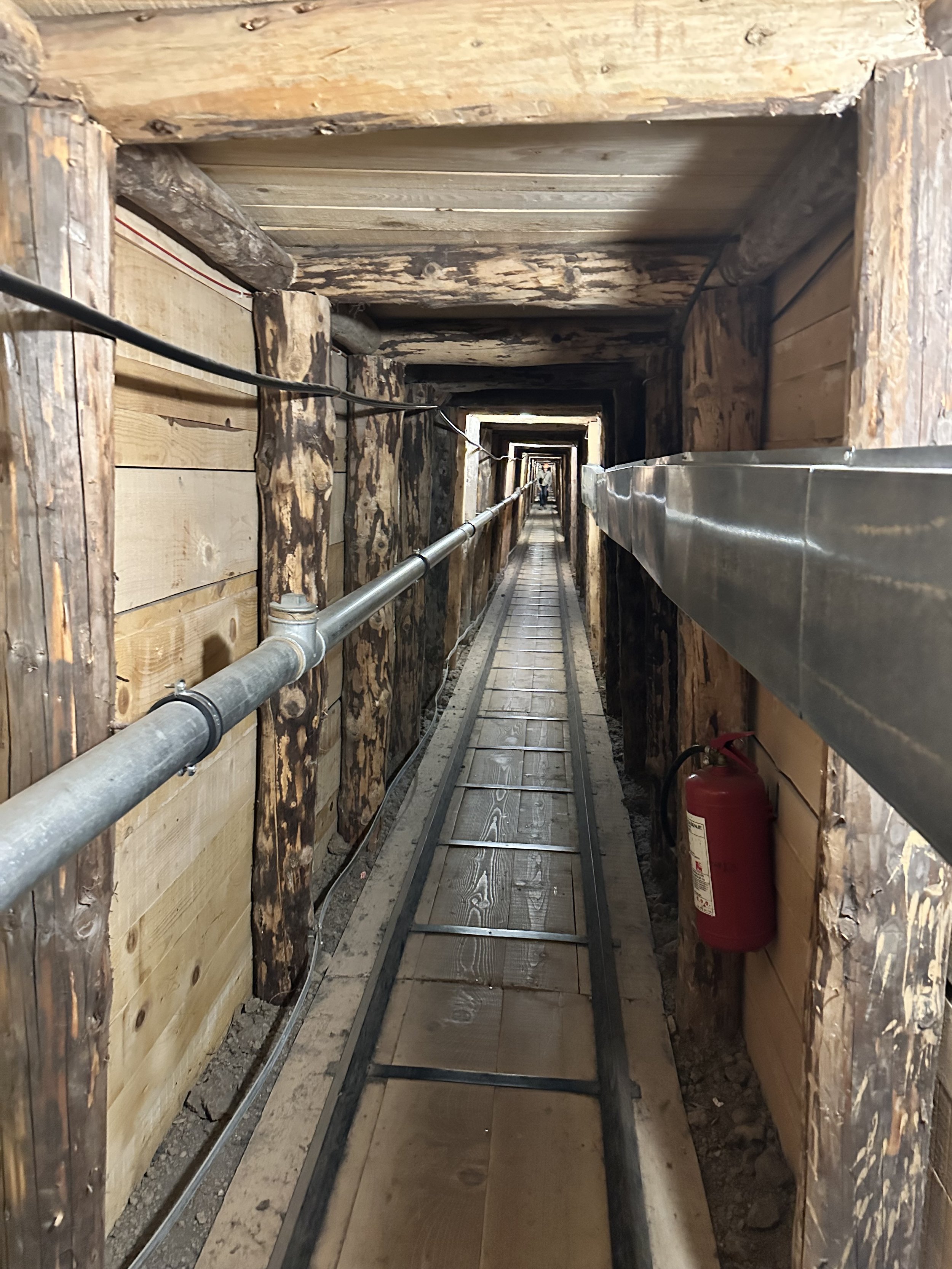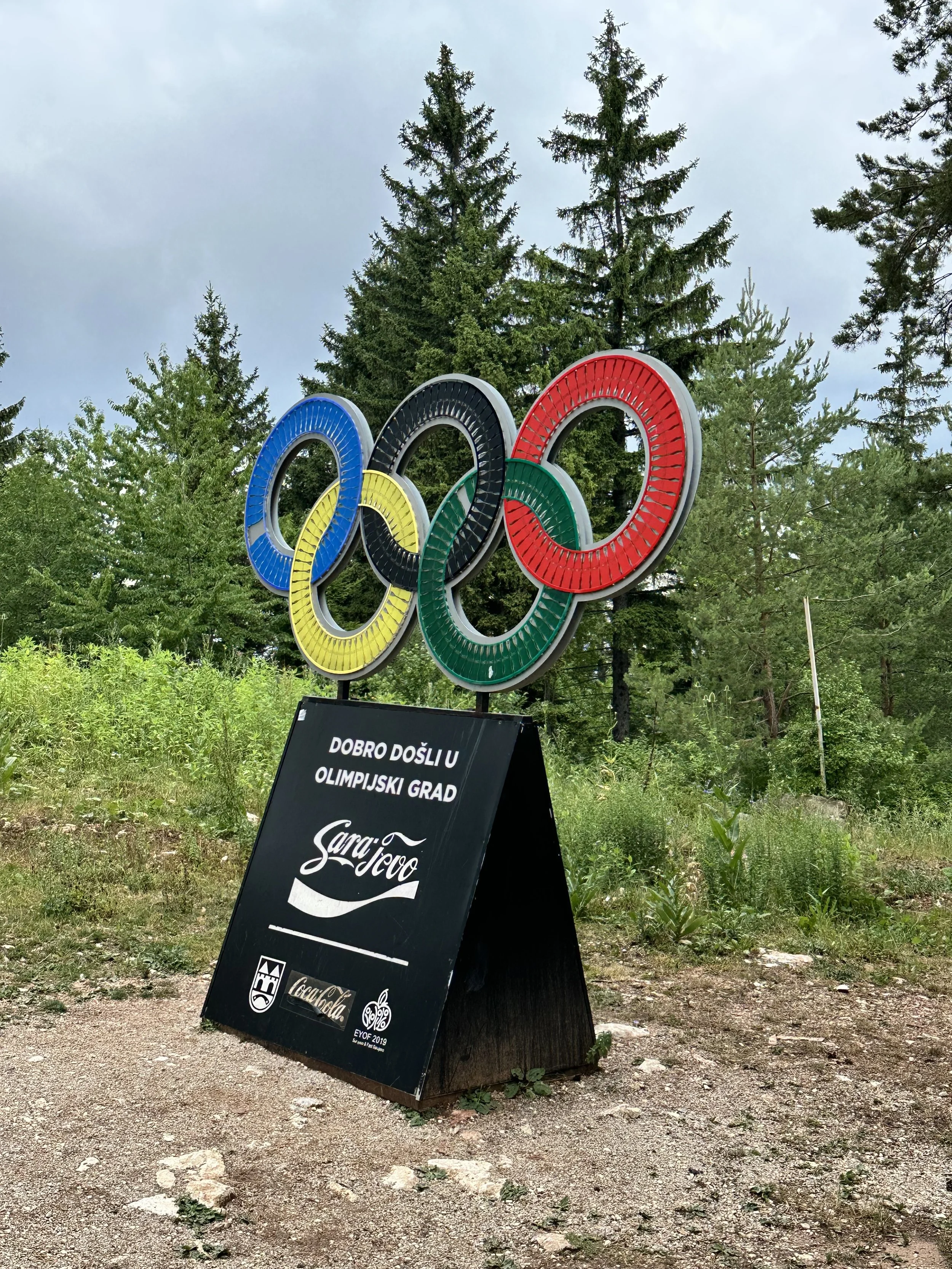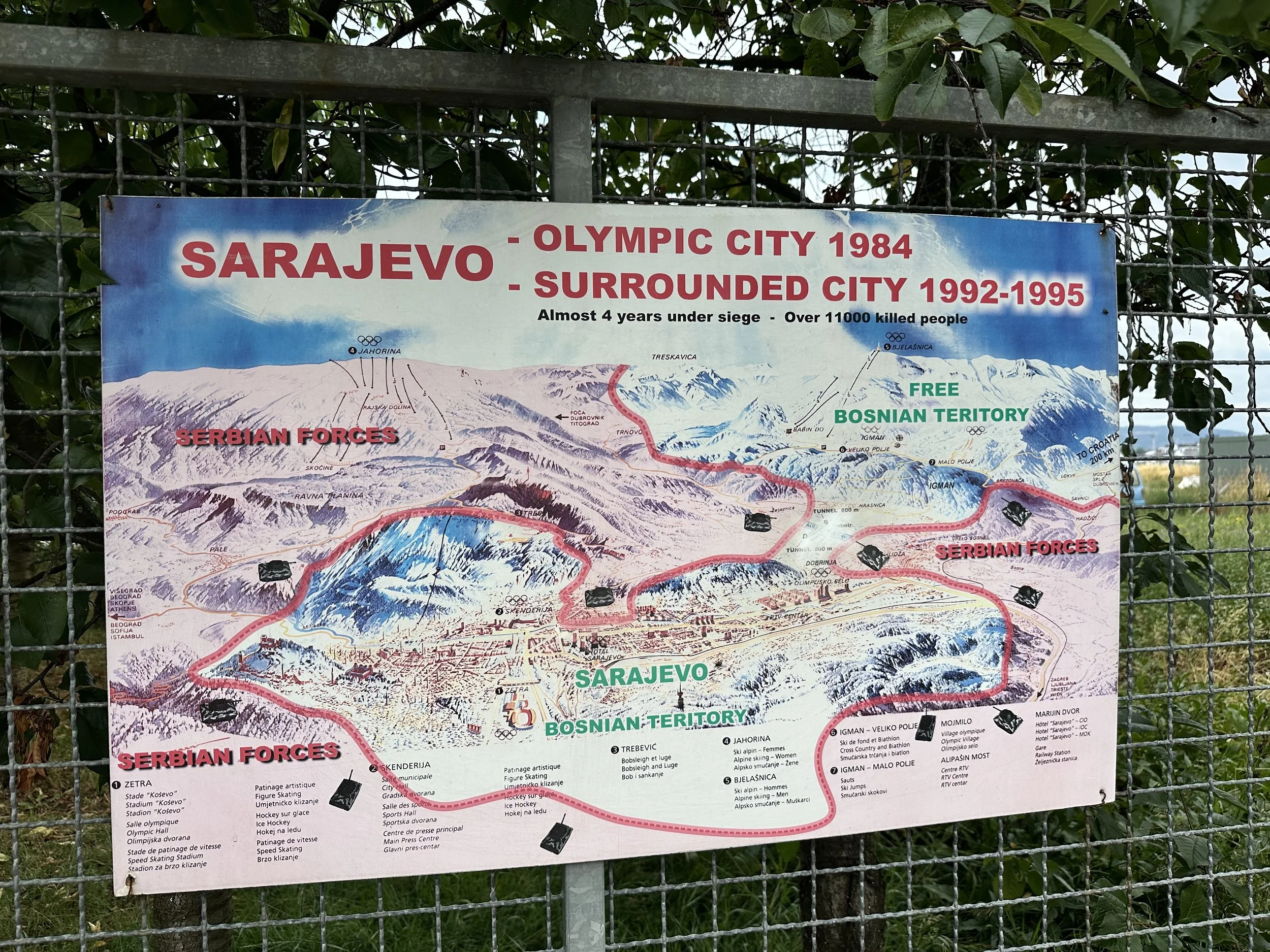Solo-ish Summer 2025 Days 47-49: Where East Meets West and History Lives On in Sarajevo and Mostar
After a long but scenic journey from Belgrade, I finally arrived in Sarajevo, the capital of Bosnia and Herzegovina. The travel day wasn’t as exhausting as I’d feared—our border crossing was smooth, and the winding drive through misty green mountains and deep valleys offered stunning views that made the hours pass a little more easily. As we descended into Sarajevo, nestled in a bowl-shaped valley surrounded by hills, the city’s unique atmosphere began to take shape.
Our driver dropped us off at the Latin Bridge, one of the city’s most iconic landmarks. Just a two-block walk to our hotel, we passed the very spot where Archduke Franz Ferdinand was assassinated in 1914—an act that set off the chain of events leading to World War I. It was surreal to casually stroll past such a pivotal point in global history, marked today by a simple plaque and a small museum that quietly acknowledge the weight of the moment.
After settling into the hotel, we regrouped for a walking tour of Sarajevo. The city immediately felt different from anywhere I’d been on this trip so far. It’s a place where empires have collided and coexisted—where East literally meets West. As we wandered through the old town, the transformation was visible block by block. One moment you’re standing in an Ottoman-era bazaar lined with copper coffee sets and the scent of grilled ćevapi; the next, you’re walking on Austro-Hungarian-style streets that resemble Vienna. Minarets pierce the skyline alongside bell towers and synagogues, a testament to Sarajevo’s rich, complex past.
We capped off the evening with a group dinner in the old town, enjoying Bosnian specialties like grilled meats, and baklava. It was a warm and welcoming introduction to this fascinating city.
Day 2: Stories of Survival and Sarajevo’s Resilience
The next morning, we ventured to the Tunnel of Life—a vital part of Sarajevo’s recent history. During the siege of Sarajevo (1992–1996), the city was surrounded by Serbian forces, cut off from the rest of the world. Civilians were left without food, medicine, or even basic safety. In secret, Bosnian forces dug a 960-meter tunnel beneath the airport runway, linking the besieged city with the Bosnian-held territory beyond.
Walking through a preserved section of the tunnel—low ceiling, narrow, damp—I could hardly imagine making this trip loaded with supplies, much less doing it daily, under threat of shelling and sniper fire. The small museum beside the tunnel displays wartime artifacts, video footage, and personal accounts that bring the horror and the heroism into sharp focus. It’s one of the most powerful sites I’ve visited in Bosnia.
From there, we headed uphill to the abandoned 1984 Winter Olympic bobsled track, now covered in graffiti and surrounded by forest reclaiming the concrete. Once a symbol of international cooperation and athleticism, it became a frontline during the war, used by snipers and fighters. The juxtaposition of its past and present was haunting but beautiful in its own way. Three of us decided to skip the van ride back and instead took the cable car down the mountain, offering panoramic views of Sarajevo sprawled out below, red rooftops nestled among green hills.
Lunch was a quick stop for a döner kebab, which hit the spot, and then I spent the afternoon solo, diving deeper into the city’s story through its museums.
First, the Siege of Sarajevo Museum (Gallery 11/07/95), a powerful space that uses photos, videos, and survivor testimonies to convey the horror of daily life under siege. Then, the Museum of Crimes Against Humanity and Genocide, which expands the lens beyond Sarajevo to the wider atrocities of the Bosnian War, particularly Srebrenica. It’s not an easy place to visit—raw and emotional—but absolutely necessary to understand the pain and resilience of the people here.
To lighten the mood and remind myself that this city has more to offer than its suffering, I ended with the Museum of the 1980s, a quirky and nostalgic collection of pop culture, fashion, and technology from the Yugoslav era. There were cassette tapes, rotary phones, and old arcade games—things that made me smile and sparked conversations with fellow visitors about a decade many of us remember in very different ways.
Dinner that night was at Dveri, a cozy restaurant tucked down a narrow alley. Warm lighting, brick walls, and homemade bread set the mood for an exceptional meal. I had special house dish of veal wrapped around cheese and deep fried paired with grilled vegetables and a local wine. It was one of those meals you wish you could duplicate back home—not just for the flavors, but for the feeling.
Day 3: Sarajevo to Mostar – Minarets, Mountains, and a River View
My final morning in Sarajevo began with one last wander through Baščaršija, the city’s historic Ottoman bazaar. The call to prayer echoed softly as shopkeepers began setting out their goods—handmade copperware, intricate carpets, and the ever-present aroma of strong Bosnian coffee. I ducked into one of the many cafes for a final demitasse, served in a džezva with a cube of sugar and Turkish delight on the side, savoring both the caffeine and the quiet rhythm of the old town coming to life.
By late morning, we were on the road again—heading southwest toward Mostar, one of the most picturesque towns in Bosnia and Herzegovina. The drive itself was a highlight: rugged mountains, plunging valleys, and the emerald Neretva River winding alongside us for much of the journey. It was a stark yet stunning contrast to Sarajevo’s alpine setting.
We arrived in Mostar in the early afternoon, and the heat hit immediately—Mostar is noticeably warmer than Sarajevo, with a Mediterranean feel. The town is most famous for the Stari Most, or Old Bridge, a 16th-century Ottoman bridge that arches gracefully over the Neretva River. Originally built in 1566 and tragically destroyed during the war in 1993, it was meticulously reconstructed and reopened in 2004—a powerful symbol of reconciliation and resilience.
We walked through the cobblestone streets of the old town, lined with colorful shops selling local crafts, scarves, and souvenirs. The architecture here leans heavily into Ottoman design: domed mosques, arched windows, and shaded courtyards. It almost felt like stepping into a different country, yet still undeniably Bosnian.
After some sightseeing—and watching a few brave (or foolish?) locals prepare to dive off the Stari Most into the river below—we settled in at one of the many restaurants perched along the riverbank. The views were incredible: stone buildings clinging to the cliffs, the Old Bridge glowing golden in the afternoon sun, and the rush of the river below providing a natural soundtrack.
We grabbed a table close to the water and ordered cold beers and platters of grilled meats, cheeses, and fresh bread. The heat, the breeze, the view, the food—it all made for a perfect way to unwind after days of emotional and historical intensity in Sarajevo. There was laughter, good conversation, and the kind of easy contentment that only comes with a day well spent.
As the sun began to dip behind the hills, Mostar transformed into a warm wash of colors, with lights twinkling along the river and the call to prayer drifting across the water. It was peaceful, poignant, and quietly unforgettable.
Bosnia and Herzegovina surprised me. It moved me. And in places like Sarajevo and Mostar, it offered both hard truths and quiet beauty. I left feeling humbled by the past and hopeful for the future—and already wondering when I might return.


